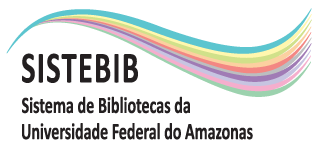| ???jsp.display-item.social.title??? |


|
Please use this identifier to cite or link to this item:
https://tede.ufam.edu.br/handle/tede/10428Full metadata record
| DC Field | Value | Language |
|---|---|---|
| dc.creator | Nunes, Leila Márcia Azevedo | - |
| dc.creator.Lattes | https://lattes.cnpq.br/4187157864386057 | eng |
| dc.contributor.advisor1 | Soares, Artemis de Araújo | - |
| dc.contributor.advisor1Lattes | http://lattes.cnpq.br/0487210816377783 | eng |
| dc.contributor.referee1 | Ramos, Erika da Silva | - |
| dc.contributor.referee2 | Barros, Rosemara Staub de | - |
| dc.date.issued | 2024-06-20 | - |
| dc.identifier.citation | NUNES, Leila Márcia Azevedo. As danças árabes e indianas como manifestação cultural no Amazonas. 2024. 110 f. Dissertação (Mestrado em Sociedade e Cultura na Amazônia) - Universidade Federal do Amazonas, Manaus (AM), 2024. | eng |
| dc.identifier.uri | https://tede.ufam.edu.br/handle/tede/10428 | - |
| dc.description.resumo | A dança é uma atividade que oferece a possibilidade de experimentar diferentes formas de usar o corpo e suas qualidades de movimento para representar diferentes ideias coreográficas, abrindo um leque de criação. Neste trabalho, como manifestação artística, focamos nas danças árabes e indianas, uma vez que estas alcançaram, ao longo dos anos, notoriedade na cidade de Manaus, quando grande número de imigrantes chegou ao norte do Brasil, influenciados pelo panorama econômico, social e religioso. Nesse sentido, esta dissertação descreve os desdobramentos das danças etnológicas árabes e indianas e as representações sociais do corpo a partir de suas composições coreográficas. Apoiados nos conceitos de Le Breton, 16 participantes envolvidos nesse contexto da dança protagonizam este estudo. Para coleta de dados utilizamos grupo focal, método visual (análise de vídeo e autofotografia) além de entrevista e questionário individual. A confiabilidade dos dados se pauta no método da triangulação dos achados. Três temáticas se destacam na categorização realizada pela análise de Bardin: 1. O papel da escola como mediadora de transformações sujeito-mundo; 2. Os processos de ensino-aprendizagem nas danças etnológicas: da técnica ao processo de assimilação; e 3. Os elementos surpresa nas coreografias: momentos surpreendentes que foram memoráveis no cenário das danças etnológicas. O universo das danças etnológicas árabes e indianas em Manaus vai muito além da questão do amor pela dança, envolve o contexto dançante e como esses corpos se transculturam. Este é o foco deste trabalho | eng |
| dc.description.abstract | Dance is an activity that offers the possibility of experimenting with different ways of using the body and its movement qualities to represent different choreographic ideas, opening up a range of creation. In this work, as an artistic manifestation, we focus on Arabic and Indian dances, as these have achieved, over the years, notoriety in the city of Manaus, when a large number of immigrants arrived in the north of Brazil, influenced by the economic, social and religious panorama. In this sense, this dissertation describes the unfoldings of Arabic and Indian ethnological dances and the social representations of the body from their choreographic compositions. Supported by Le Breton's concepts, 16 participants involved in this dance context are the protagonists of this study. To collect data, we used a focus group, visual method (video analysis and self-photography) in addition to an interview and individual questionnaire. The reliability of the data is based on the method of triangulation of findings. Three themes stand out in the categorization carried out by Bardin's analysis: 1. The role of the school as a mediator of subject-world transformations; 2. The teaching-learning processes in ethnological dances: from technique to the assimilation process; and 3. The surprise elements in the choreographies: surprising moments that were memorable in the ethnological dance scene. The universe of Arabic and Indian ethnological dances in Manaus goes far beyond the issue of love for dance, it involves the dancing context and how these bodies transculture themselves. This is the focus of this work. | eng |
| dc.description.sponsorship | FAPEAM - Fundação de Amparo à Pesquisa do Estado do Amazonas | eng |
| dc.format | application/pdf | * |
| dc.thumbnail.url | https://tede.ufam.edu.br/retrieve/78390/DISS_LeilaNunes_PPGSCA.pdf.jpg | * |
| dc.language | por | eng |
| dc.publisher | Universidade Federal do Amazonas | eng |
| dc.publisher.department | Instituto de Filosofia, Ciências Humanas e Sociais | eng |
| dc.publisher.country | Brasil | eng |
| dc.publisher.initials | UFAM | eng |
| dc.publisher.program | Programa de Pós-graduação em Sociedade e Cultura na Amazônia | eng |
| dc.rights | Acesso Aberto | - |
| dc.rights.uri | https://creativecommons.org/licenses/by-nc-nd/4.0/ | pt_BR |
| dc.subject | . | por |
| dc.subject | . | por |
| dc.subject | . | por |
| dc.subject.cnpq | CIENCIAS SOCIAIS APLICADAS | eng |
| dc.title | As danças árabes e indianas como manifestação cultural no Amazonas | eng |
| dc.type | Dissertação | eng |
| dc.description.sugestao | Acredito que minha desatenção foi maior que tudo. O passo a passo tá bem explicado, é mais ansiedade mesmo. | eng |
| dc.description.info | É uma pesquisa aberta e ainda possui lacunas e outros olhares. Acreditamos que essa manifestação merece ser pesquisada e difundida dentro do mundo acadêmico | eng |
| dc.contributor.advisor1orcid | https://orcid.org/0000-0002-9678-2937 | eng |
| dc.creator.orcid | https://orcid.org/0000-0002-6453-6416 | eng |
| dc.subject.user | Danças árabes e indianas | por |
| dc.subject.user | transculturalidade | por |
| dc.subject.user | Coreografia | por |
| dc.subject.user | Migração | por |
| Appears in Collections: | Mestrado em Sociedade e Cultura na Amazônia | |
Files in This Item:
| File | Description | Size | Format | |
|---|---|---|---|---|
| DISS_LeilaNunes_PPGSCA.pdf | 2.64 MB | Adobe PDF |  Download/Open Preview |
Items in DSpace are protected by copyright, with all rights reserved, unless otherwise indicated.




